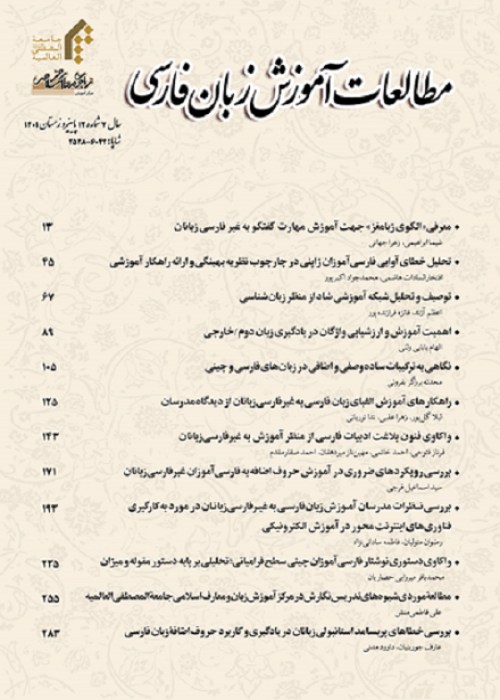An Overview of Chinese and Persian Proverbs (A Descriptive and Contrastive Analysis)
Author(s):
Article Type:
Research/Original Article (دارای رتبه معتبر)
Abstract:
The comparative study of Chinese and Persian proverbs can, on the one hand, increase the understanding of mutual culture between the people of China and Iran, and on the other hand, it can be used in the teaching of Chinese and Persian languages so that language learners can better understand the language and culture of the two countries. Due to the lack of research for the educational classification of Chinese and Persian proverbs, in this research, Chinese and Persian proverbs have been classified and described in four groups using formal and semantic features: the first group includes proverbs with similar literal and figurative meanings, the second group includes proverbs with similar literal meanings but different figurative meanings, the third group includes proverbs with different literal meanings but similar figurative meanings, and the fourth group includes proverbs with different literal and figurative meanings. The four-fold classification of Chinese and Persian proverbs, along with examples extracted from the selected source, indicates that proverbs with different literal and different figurative meanings rank first in terms of the highest number of proverbs, those with similar literal and similar figurative meanings in second rank, those with different literal meanings but similar figurative meanings in third rank, and those with similar literal meanings but different figurative meanings in fourth rank. The pedagogical implication of this research seems to be as follow: Persian proverbs with similar literal and figurative meanings to their equivalent Chinese proverbs are more effective for teaching at a basic level; Persian proverbs with different literal but similar figurative meanings to their equivalent Chinese proverbs are more effective for teaching at an intermediate level; Persian proverbs with similar literal but different figurative meanings to their equivalent Chinese proverbs are more effective for teaching at an advanced level; while Persian proverbs with different literal and figurative meanings are effective for teaching at all levels.
Keywords:
Language:
Persian
Published:
Journal of Persian Language International Teaching Studies, Volume:8 Issue: 13, 2023
Pages:
171 to 184
magiran.com/p2639445
دانلود و مطالعه متن این مقاله با یکی از روشهای زیر امکان پذیر است:
اشتراک شخصی
با عضویت و پرداخت آنلاین حق اشتراک یکساله به مبلغ 1,390,000ريال میتوانید 70 عنوان مطلب دانلود کنید!
اشتراک سازمانی
به کتابخانه دانشگاه یا محل کار خود پیشنهاد کنید تا اشتراک سازمانی این پایگاه را برای دسترسی نامحدود همه کاربران به متن مطالب تهیه نمایند!
توجه!
- حق عضویت دریافتی صرف حمایت از نشریات عضو و نگهداری، تکمیل و توسعه مگیران میشود.
- پرداخت حق اشتراک و دانلود مقالات اجازه بازنشر آن در سایر رسانههای چاپی و دیجیتال را به کاربر نمیدهد.
In order to view content subscription is required
Personal subscription
Subscribe magiran.com for 70 € euros via PayPal and download 70 articles during a year.
Organization subscription
Please contact us to subscribe your university or library for unlimited access!


